UPSC Daily Current Affairs: 27th September 2024 | Current Affairs & Hindu Analysis: Daily, Weekly & Monthly PDF Download
GS3/Environment
Dhanauri Wetland
Source: Indian Express

Why in News?
The National Green Tribunal (NGT) has instructed the Uttar Pradesh government to clear the water hyacinth from the Dhanauri wetlands and has raised concerns regarding the government's inaction in designating this wetland as a Ramsar site.
About
- Details
- Location: Dhanauri village, situated near Dankaur in Uttar Pradesh, within the floodplains of the Yamuna River.
- Key Species
- Home to over 120 species of Sarus Cranes, which is also the state bird of Uttar Pradesh, and hosts a total of 217 bird species.
- Ecological Significance
- This wetland is a vital birding and nesting area, recognized as an Important Bird Area by Bird Life International.
- Bird Population
- During the migratory season from November to March, the wetland attracts over 50,000 waterfowl.
- Ramsar Criteria
- Meets two essential Ramsar criteria:
- It supports over 1% of the biogeographic population of Sarus Cranes.
- It serves as a congregation site for more than 20,000 waterfowl.
- Meets two essential Ramsar criteria:
- Conservation Status
- The Bombay Natural History Society (BNHS) has documented this wetland, highlighting its importance in supporting endangered species.
- Ramsar Wetlands
- The Ramsar Convention, also referred to as the 'Convention on Wetlands,' is an intergovernmental treaty created by UNESCO in 1971, named after the city of Ramsar in Iran where it was signed.
- Ramsar sites are wetlands recognized for their global significance under this treaty.
- Montreux Record
- This record lists wetland sites facing ecological changes, requiring close monitoring under the Ramsar Convention.
- Ramsar Site Designation Criteria
- Criteria for designating Ramsar sites include:
- Representation of rare or unique natural wetland types.
- Support for endangered species or threatened ecological communities.
- Maintenance of biodiversity in specific biogeographic regions.
- Provision of refuge during adverse conditions.
- Regular accommodation of 20,000 or more waterbirds.
- Support for 1% of a population of a single waterbird species.
- Functioning as a critical resource for food, spawning grounds, nurseries, and migration routes for fish.
- Regularly supporting 1% of a population of non-avian wetland-dependent animal species.
- Criteria for designating Ramsar sites include:
GS1/History & Culture
Bhagat Singh (1907-1931)
Source: The Hindu

Why in News?
September 28th marks the 117th birth anniversary of the legendary freedom fighter Bhagat Singh.
Who was Bhagat Singh?
- Details
- Birth: September 28, 1907; Banga, Punjab (now in Pakistan)
- Family: Came from a family involved in anti-colonial activities; his father Kishan Singh and uncle Ajit Singh were active freedom fighters.
- Affiliations:
- Hindustan Republican Association (1924)
- Hindustan Socialist Republican Association (1928)
- Naujawan Bharat Sabha (1926)
- Revolutionary Actions
- Played a key role in the Lahore Conspiracy Case (1928) by avenging Lala Lajpat Rai’s death, mistakenly killing J.P. Saunders.
- Threw a bomb in the Central Legislative Assembly on April 8, 1929, with B.K. Dutt, to protest oppressive British laws.
- Ideologies and Principles
- Advocated Marxist and socialist ideologies.
- Rejected religion in his essay "Why I Am an Atheist".
- Emphasized rationalism, equality, and justice.
- Arrest and Trial
- Arrested for throwing a bomb in the Central Legislative Assembly; later rearrested for the murder of J.P. Saunders.
- Jinnah opposed a 1929 Bill allowing trials in absentia, delivering a strong speech in the Central Assembly.
- Execution
- Hanged on March 23, 1931, along with Sukhdev and Rajguru in Lahore for his revolutionary activities.
- Nehru and Subhash Chandra Bose visited Bhagat Singh in prison.
- Literary Works
- Bhagat Singh was fluent in Urdu, Punjabi, Hindi, and English, and familiar with Sanskrit.
- His jail notebook referenced thinkers like Karl Marx, Thomas Jefferson, Mark Twain, reflecting his intellectual diversity.
- At 17, he wrote "Vishwa Prem" (Universal Love), advocating for universal brotherhood and equality.
- He urged the oppressed classes to rebel against the social order and spoke about the philosophy of revolution in his writings, such as "What is Revolution?" (1929).
- In his series "What is Anarchism?", he described organized religion and the state as forms of mental and physical slavery.
- He wrote about the power of love in a 1929 letter, emphasizing its role in personal and political strength.
PYQ:
[2020] Since the decade of the 1920s, the national movement acquired various ideological strands and thereby expanded its social base. Discuss.
GS2/Governance
Kolkata Tram
Source: Indian Express
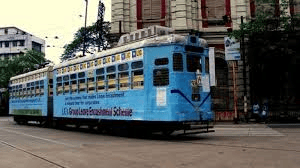
Why in news?
West Bengal has announced the discontinuation of the iconic 150-year-old Kolkata trams, India’s last functioning tram system.
About Kolkata Tram
- The Kolkata tram system was introduced in 1873, initially using horse-drawn carriages along a 3.8 km route between Sealdah and Armenian Ghat Street.
- In 1874, horse-drawn trams were introduced in Bombay (now Mumbai), followed by their launch in other cities like Nashik and Patna.
- However, the reliance on horse labor made these trams unsustainable over time.
Revival and Modernization of Kolkata’s Trams
- In 1880, Lord Ripon revived the tram system by experimenting with steam locomotives.
- While steam-powered trams improved speed, they also brought pollution, deterring other states from adopting this technology.
- Madras (now Chennai) launched electric tramcars in 1895, which significantly reduced noise pollution.
- Kolkata transitioned to electric-powered trams in 1902, establishing routes like Esplanade to Kidderpore and Esplanade to Kalighat.
Significance of Trams
- Kolkata’s trams are historically significant as India’s oldest running tram system, representing the city's colonial past and cultural identity.
- They offer an environmentally friendly and affordable means of transportation, retaining relevance even today.
- As a symbol of resilience, Kolkata’s trams have persisted while other cities have phased out similar systems.
- They also serve as a unique tourist attraction, providing a nostalgic experience of the city.
PYQ
[2020] Which of the following statements correctly explains the impact of the Industrial Revolution on India during the first half of the nineteenth century?
(a) Indian handicrafts were ruined.
(b) Machines were introduced in the Indian textile industry in large numbers.
(c) Railway lines were laid in many parts of the country.
(d) Heavy duties were imposed on the import of British manufactures.
GS2/International Relations
Storms brewing in East, South China seas
Source: The Hindu
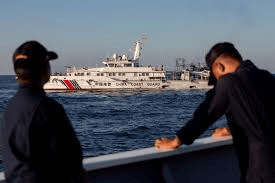
Why in news?
In recent years, maritime East Asia has become a hotspot for power politics, particularly in the East and South China Seas. The East China Sea, bordered by China, Taiwan, Japan, and South Korea, has seen repeated tensions over the Senkaku/Diaoyu Islands, which are under Japanese control but claimed by China. Meanwhile, the South China Sea, located between China, Taiwan, and five Southeast Asian nations—Vietnam, Malaysia, Brunei, the Philippines, and Indonesia—has emerged as a critical flashpoint. China has aggressively asserted its territorial claims in this region, escalating disputes and heightening geopolitical tensions across the Indo-Pacific.
Significance of East China Sea (ECS) and South China Sea (SCS)
Significance for China
- Geopolitical Control: Both seas are crucial for China’s defense and military positioning. Control over these waters allows China to project power in the region and safeguard its national security interests. The SCS is part of China's "first island chain" defense strategy, forming a buffer against external threats.
- Territorial Claims: China views the ECS and SCS as integral parts of its territorial sovereignty, with ongoing disputes over islands like the Diaoyu/Senkaku in the ECS and several islets and reefs in the SCS. In its 2019 Defence White Paper, China declares that the South China Sea islands and Diaoyu Islands are integral parts of its territory.
- Trade Routes: The South China Sea is one of the world's busiest maritime trade corridors, with an estimated $3.4 trillion in annual trade passing through it. Control over this region gives China potential leverage over international shipping routes.
- Fisheries and Resources: Both the ECS and SCS are rich in fish stocks, a critical resource for China’s food security and economy. The seas also provide livelihoods for millions in neighboring countries.
- Energy Resources: The South China Sea is believed to hold significant reserves of oil and natural gas. Securing these resources is vital for China's growing energy demands and for other nations relying on the region's resources.
Significance for other countries
- Key maritime route: The key maritime trade routes in East Asia pass through these two seas.
- Taiwan Strait: This strait is a critical maritime choke point.
- Vital for digital economy: The region is home to undersea cables that are important for the global digital economy.
- Vital for energy security: As per the U.S. Energy Information Administration, in 2023, 10 billion barrels of petroleum and petroleum products and 6.7 trillion cubic feet of liquefied natural gas passed through the South China Sea. It is also home to vast reserves of untapped oil and natural gas.
- Global Security: The East and South China Seas are flashpoints for potential conflict. It is drawing global attention from powers like the U.S., which conducts Freedom of Navigation Operations (FONOPs) to challenge China’s maritime claims. These tensions affect global trade, security alliances, and regional stability in the Indo-Pacific.
China aggressively pushing its territorial claims in both seas
- China employs two main strategies to assert its claims: building defense-related infrastructure such as ports, military installations, airstrips, and artificial islands, and pushing back against the claims of regional countries.
East China Sea Tensions
- In the East China Sea, China has aggressively contested Japan's control over the Senkaku/Diaoyu Islands, leading to multiple crises. Notable incidents include the arrest of a Chinese fishing captain in 2010 and Japan's nationalization of the islands in 2012. Both countries took maximalist positions, and China responded by banning rare earth mineral exports to Japan.
- While tensions have slightly eased in recent years, 2023 witnessed the highest level of Chinese Coast Guard activity near the islands, signaling ongoing disputes. China's assertive foreign policy has strained its relations with South Korea, Taiwan, and Japan.
South China Sea Power Asymmetry
- In the South China Sea, China's growing power has resulted in increased military presence and aggression towards claimant countries such as Vietnam, Malaysia, the Philippines, and Brunei. With the world's largest navy by numbers, China has conducted "grey zone" operations that involve harassment tactics like ramming vessels, using water cannons, and military-grade lasers, short of initiating full-scale conflict.
Philippines-China Tensions
- Tensions between China and the Philippines have intensified since 2022, especially around Second Thomas Shoal and Sabina Shoal. China has repeatedly disrupted the Philippines' resupply missions. China's heavier and larger Coast Guard ships frequently ram smaller Philippine vessels, creating risks of miscalculation.
- The growing frequency of these incidents, including clashes in mid-2024, reflects China's determination to assert its dominance.
Strategic Alignment and Legal Rejection
- In July 2024, China conducted joint naval exercises with Russia in the South China Sea, showcasing its geopolitical alliances. Despite a 2016 ruling by the Permanent Court of Arbitration rejecting China's territorial claims in the South China Sea, China continues to dismiss the legal decision, maintaining its aggressive posture in the region.
Regional Responses to China's Aggression in the East and South China Seas
- Strengthening Defence Capabilities: Countries in the Indo-Pacific have ramped up their military expenditures to counter China’s growing power. Japan aims to double its defense budget by 2027, and the Philippines has acquired BrahMos anti-ship missiles from India as part of its defense buildup.
- Active Responses at Sea: Since 2022, the Philippines has pushed back against China’s activities, publicizing incidents and filming Chinese vessels to shape perceptions. They have also involved international journalists in documenting Chinese behavior in the West Philippine Sea, turning public diplomacy into a strategic tool.
- Narrative Battle: Countries are engaging in a battle of narratives, using public diplomacy and media to highlight China’s aggressive actions and gain international support.
- Strengthening Alliances with the U.S.: Allies like the Philippines, Japan, and South Korea have strengthened their defense ties with the U.S. Cooperation between the U.S. and the Philippines in the South China Sea has reached "historic levels," with increased base access, training, and joint exercises. A broader multilateral cooperation dubbed the ‘Squad’ involves the U.S., Australia, Japan, and the Philippines.
- Trilateral Cooperation; The U.S., Japan, and South Korea have deepened their trilateral defense relationship, with their Defense Ministers meeting for the first time in July 2024. They oppose any unilateral attempts to alter the status quo in the Indo-Pacific and emphasize adherence to international law, including freedom of navigation.
GS3/Science and Technology
WAVES Anime & Manga Contest
Source: AIR
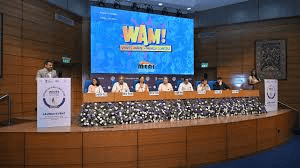
Why in News?
In an effort to promote anime and manga culture in India, the Ministry of Information & Broadcasting has launched the WAVES Anime & Manga Contest (WAM!).
About the WAVES Anime & Manga Contest
- The WAM! is an innovative initiative by the Ministry of Information & Broadcasting in collaboration with the Media & Entertainment Association of India (MEAI).
- This contest is a part of the Create in India Challenge, aiming to nurture local creative talent in anime and manga production.
- It offers a unique platform for Indian creators to produce localized versions of Japanese art styles, targeting both domestic and global audiences.
- The contest provides marketing support and opportunities for global recognition, helping creators showcase their talents in webtoons.
- It features three key categories:
- Manga (Japanese style comics): Open for individual participation from both students and professionals.
- Webtoon (Vertical comics for digital platforms).
- Anime (Japanese style animation): Team participation allowed for groups of up to four members.
About the Create in India Challenge
- This initiative aligns with the Prime Minister's vision of "Design in India, Design for the World," focusing on developing creative industries within India.
- It aims to position India as a global hub for design, innovation, and creative production.
- The contest serves as a precursor to a large-scale event aimed at promoting creativity and technology in media and entertainment.
GS2/Polity
Bilkis Bano case - Supreme Court dismisses Gujarat review plea
Source: The Hindu
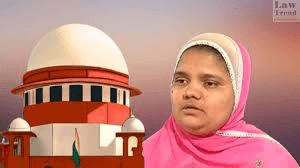
Why in News?
The Supreme Court rejected the Gujarat government's plea to review its January 8 verdict, which had canceled the remission granted to 11 men convicted of raping Bilkis Bano and killing seven of her family members during the 2002 Gujarat riots. The Gujarat government contested certain "adverse" observations made by the court in the January verdict, arguing that such remarks should not have been made against the state. However, the court found no merit in the review plea and dismissed it.
What is Remission?
- Remission refers to the termination of a prison sentence at an earlier date than originally intended.
- It differs from furlough and parole, as it signifies a reduction in the sentence rather than a temporary release.
Constitutional Provisions
- The Constitution grants both the President and the Governor the power to pardon, reprieve, respite, or remit sentences.
- Article 72 empowers the President to grant these actions for any individual.
- Article 161 allows the Governor to exercise similar powers regarding punishment or sentence modifications.
Statutory power of remission
- The Code of Criminal Procedure (CrPC) includes provisions for the remission of sentences, acknowledging that prisons fall under state jurisdiction.
- Section 432 authorizes the "appropriate government" to suspend or remit sentences with or without conditions.
- Section 433 allows any sentence to be commuted to a lighter one by the appropriate government.
- These powers enable state governments to release prisoners before their full terms are served.
- The CrPC has been replaced by the Bharatiya Nagarik Suraksha Sanhita (BNSS).
CHAPTER XXXIV of the BNSS 2023
- Section 473: Central Government can suspend or remit sentences for offenses under Union laws.
- Section 474: The appropriate government can commute a punishment without offender consent.
- Section 475: Restrictions on remission or commutation powers in specific cases.
- Section 477: State Government must consult the Central Government in certain scenarios.
Guidelines to be followed while granting Remission
- In the case of Laxman Naskar v. Union of India (2000), the Supreme Court identified five criteria for considering remission:
- Whether the crime was an isolated act not affecting society.
- Whether there is a risk of the convict reoffending.
- Whether the convict has lost the capacity to commit further crimes.
- Whether continuing imprisonment serves any purpose for the convict.
- Consideration of the socio-economic conditions of the convict's family.
- Convicts serving life sentences may seek remission after a minimum of 14 years in prison.
What is Bilkis Bano Case?
- Following the Godhra riots in 2002, Bilkis Bano and her family were violently attacked.
- Bilkis was gang-raped, and seven family members were murdered in the incident.
- The National Human Rights Commission (NHRC) and the Supreme Court intervened, leading to a CBI investigation.
- Due to threats, the trial was relocated from Gujarat to Mumbai, where charges were formally filed.
- In January 2008, a special CBI court sentenced the 11 accused to life imprisonment.
Release of these convicts
- In 2022, Radheshyam Shah, one of the convicts, sought early release after serving over 15 years.
- The Supreme Court referred the case to the Gujarat government for consideration under its 1992 remission policy.
- On August 15, 2022, the Gujarat government released all 11 convicts based on this policy.
- This decision led to significant public outrage and legal petitions from opposition members.
Review petition by Bilkis Bano
- Bilkis Bano filed a Supreme Court appeal in 2022 to challenge the Gujarat government's release decision.
- The Supreme Court's January 8 ruling canceled the remission, stating that Gujarat was not the appropriate government to grant release since the trial was held in Maharashtra.
- The court found the remission order lacked legal authority and was obtained through misleading circumstances.
Supreme Court June 2022 ruling
- In May 2022, the Supreme Court ruled that remission must be considered based on the laws of the state where the crime was committed.
- The Gujarat government's remission policy was improperly applied for the release of these convicts.
- The principle of rule of law must be upheld, regardless of the potential consequences.
News Summary- Supreme Court dismisses Gujarat review plea
- The Supreme Court dismissed the Gujarat government's review plea regarding the January 8 ruling that voided the remission for the Bilkis Bano case convicts.
- The January ruling accused Gujarat of complicity and noted that the remission was based on fraudulent practices.
- The court criticized Gujarat for not challenging the earlier ruling sooner, which could have prevented prolonged legal disputes.
Stand of Gujarat govt
- In its review plea, Gujarat maintained it was adhering to the Supreme Court's directive to evaluate remission requests under its 1992 policy.
- Despite citing Maharashtra as the proper authority, Gujarat argued it was not guilty of power usurpation.
- The state claimed it had no obligation to file a review since Bilkis Bano's appeal was already dismissed in December 2022.
- Gujarat denied any involvement in fraudulent activities.
GS2/Polity
 |
Download the notes
UPSC Daily Current Affairs: 27th September 2024
|
Download as PDF |
Fortifying the Basic Structure
Source: The Hindu
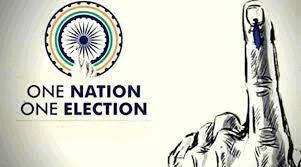
Why in news?
Recently, the Union Cabinet has approved a report by the High-Level Committee that recommends holding simultaneous elections for both the Lok Sabha and state assemblies. This has reignited discussions around the concept of “One Nation, One Election” (ONOE).
Benefits of Simultaneous Elections on Governance and Stability:
- Reduction of Policy Paralysis: By conducting simultaneous elections, the frequent enforcement of the Model Code of Conduct (MCC) is minimized. This allows for continuous governance without interruptions, ensuring that new policy initiatives can be pursued without delay.
- Efficient Resource Allocation: Holding elections in a synchronized manner enables better planning and deployment of resources, including security forces and election officials. This streamlined approach enhances both planning and execution of government policies.
- Cost-Effectiveness: Organizing elections simultaneously can significantly lower the costs associated with multiple electoral processes. Consequently, the government can redirect funds towards developmental projects rather than spending on repeated elections.
- Political Stability: Simultaneous elections can reduce the risk of political instability that often arises from staggered elections, fostering a more stable environment conducive to long-term economic and social development.
Voter Engagement and Participation:
- With simultaneous elections, voters are likely to be more inclined to vote, as they only need to participate once to choose both state and national representatives. This can enhance voter turnout and engagement.
- This approach simplifies the voting process for citizens, as they avoid the fatigue associated with frequent elections, making it easier to participate in the democratic process.
- Voting concurrently for state and national representatives allows voters to make more informed choices, as they can better understand the alignment of their political preferences at both levels.
Impact on Political Dynamics:
- Level Playing Field: Simultaneously held elections can diminish the advantages that ruling parties typically enjoy during state elections, which can influence national outcomes. This shift allows opposition parties to concentrate their resources and strategies on a single electoral event.
- Less Populism: Fixed election dates may lead to a reduction in short-term populist strategies by political parties, encouraging more substantial discussions on enduring issues rather than temporary promises.
- Reduced Election Fatigue: Frequent elections can lead to voter fatigue, decreasing engagement in political matters. Combined elections can alleviate this fatigue, potentially leading to lower campaign costs for political parties.
- Strategic Alliances: Simultaneous elections could incentivize parties to form more robust alliances, facilitating coherent national and state-level strategies rather than fragmented campaigning.
Way Forward:
- Constitutional and Legislative Reforms: Careful amendments to the Constitution and electoral laws are necessary to align the election cycles of the Lok Sabha and state assemblies, ensuring that this transition does not compromise democratic integrity.
- Building Consensus Across Political Spectrum: It is essential to achieve a broad political consensus through dialogue among all stakeholders. This approach will address concerns and mitigate opposition, positioning simultaneous elections as a means to enhance democratic efficiency rather than a partisan tactic.
- Mains PYQ:
- Simultaneous elections for the Lok Sabha and State Assemblies may reduce the time and money spent on electioneering, yet they could also potentially diminish the government's accountability to the public. Discuss.
GS2/International Relations
India-US Ties During the Presidency of Joe Biden
Source: Hindustan Times

Why in News?
On the sidelines of the Quad leaders’ summit, the Indian PM held a meeting with United States President Joe Biden. As this meeting between the two world leaders may have been the last before Biden leaves the White House in January 2025, it is necessary to look into how the Biden presidency has shaped US-Indian relations.
How did Biden Mould US-Indian Relations Prior to Taking Office as US President?
- In 2006, Biden expressed optimism that by 2020, the United States and India would become the two closest nations globally.
- In 2008, while serving as a Senator, he played a key role in securing approval for the landmark India-US nuclear deal in Congress.
- As Vice President under Barack Obama, he visited India in 2013, meeting with Prime Minister Manmohan Singh and Vice President Hamid Ansari.
- During his 2020 presidential campaign, Biden reaffirmed his commitment to support India in addressing various border threats.
Legacy of Donald Trump’s Presidency for India - US Ties
- Biden inherited a robust India-US relationship from Donald Trump, who had strategically aligned US and Indian positions, particularly concerning China.
- For the first time, Trump framed China as a strategic rival, a stance that Biden continued.
- Trump also revitalized the Quad grouping (India, the US, Australia, and Japan) in 2017, which was elevated to a leaders’ level by Biden in 2021, culminating in the first Quad leaders’ summit.
India - US Ties During the Biden’s Presidency
- Since the inaugural Quad leaders’ summit in 2021, Biden and the Indian PM have met six times at a leadership level, with four of those meetings occurring in person.
- On the bilateral front, they engaged in discussions at least 10 times, including two virtual interactions.
- Both nations aimed to reduce dependence on China in the post-pandemic era and sought inclusion in a resilient global supply chain.
Technology Cooperation Between India - US
- In 2023, the two National Security Advisers launched the Initiative for Critical and Emerging Technology (iCET) in Washington.
- The iCET aims to facilitate strategic technology collaborations and enable co-development and co-production in various technological fields.
- Key focus areas include AI, quantum technologies, telecommunications, space exploration, biotechnology, semiconductors, and emerging defense technologies.
- Following several NSA-level meetings, the results of iCET became apparent.
Significance of the iCET
- The Shakti semiconductor fabrication plant, established in India, represents a pivotal technology partnership between Indian businesses and the US Space Force.
- This collaboration is notable as it breaks new ground in tech diplomacy by advancing chip fabrication technology.
- India and the US are also engaged in a broad array of technology partnerships, including joint research on the International Space Station and agreements on critical minerals supply chains.
- India is in discussions to acquire 31 remotely piloted aircraft from the US, further strengthening defense ties.
What are the Issues in the India-US Ties?
- The alleged assassination plot against US-based pro-Khalistan separatist Gurpatwant Singh Pannun has emerged as a contentious issue.
- Before the Indian PM's visit to the US, a US court summoned NSA Ajit Doval following a civil suit filed by Pannun regarding the alleged plot.
- A group of pro-Khalistan separatists visited the White House just prior to the Indian PM's US visit, complicating diplomatic relations.
- India needs to address this situation to alleviate US concerns about its democratic principles.
- Despite these challenges, the strategic partnership regarding China remains a priority, suggesting that such issues are manageable within the broader context of cooperation.
GS3/Science and Technology
Deeptech: Revolutionizing the Future of Technology
Source: Economic Times

Why in news?
Deeptech, representing advanced technological innovations grounded in scientific and engineering breakthroughs, is gaining attention. These technologies have the potential to transform industries and tackle significant global challenges.
- Deeptech encompasses fields such as artificial intelligence, robotics, quantum computing, biotechnology, blockchain, and advanced materials.
Key Characteristics of Deeptech:
- Scientific and Engineering Foundations: Deeptech is fundamentally based on extensive scientific research and engineering progress, relying on sophisticated algorithms and requiring a thorough comprehension of the underlying science.
- High Entry Barriers: Deeptech ventures often face substantial entry barriers due to the necessity for specialized expertise, considerable capital investment, and complex development processes.
- Significant Impact Potential: Solutions developed through deeptech aim to address pivotal issues across sectors like healthcare, energy, manufacturing, and agriculture, with the capability of generating significant economic value and societal benefits.
- Extended Development Timelines: Unlike conventional tech startups, which can scale swiftly, deeptech companies usually encounter prolonged timelines due to the rigorous processes of testing, prototyping, and validation prior to market entry.
Present Challenges Facing Deeptech:
- High R&D Costs: Developing deeptech solutions necessitates substantial investments in research, infrastructure, and skilled personnel, making it a challenge for startups to acquire funding.
- Commercialization Barriers: Transforming deeptech innovations into market-ready products involves navigating technical, regulatory, and market acceptance challenges.
- Talent Shortage: There is an escalating demand for specialized professionals in areas such as quantum computing, AI, and biotechnology, but the available talent pool is limited.
- Long Time-to-Market: The lengthy development and regulatory approval timelines can dissuade investors who seek quicker returns on their investments.
Future of Deeptech:
- The outlook for deeptech is optimistic, with rising investments and backing from government bodies, academic institutions, and private enterprises.
- As deeptech continues to progress, its influence will be crucial in shaping industries and enhancing quality of life.
- Governments and private investors are acknowledging the importance of supporting deeptech startups through funding, incubators, and policy frameworks.
National Deeptech Startup Policy:
- India's National Deeptech Startup Policy is a strategic initiative designed to promote the growth of deep technology startups in the country.
- Deeptech startups, grounded in advanced scientific and engineering innovations, are essential for bolstering India’s technological leadership and addressing complex challenges in sectors like healthcare, agriculture, energy, and manufacturing.
Objectives of the Policy:
- Promoting Innovation: To stimulate the development of cutting-edge technologies via support for research and development, grants, and innovation hubs.
- Facilitating Access to Capital: To offer financial assistance and incentives, including venture capital, government grants, and tax benefits to deeptech startups.
- Building Infrastructure: To create dedicated incubators, accelerators, and test beds to bridge the gap between research and commercialization.
- Developing Skilled Talent: To enhance educational programs and skill development initiatives, thereby cultivating a skilled workforce in advanced technological fields.
- Streamlining Regulations: To simplify regulatory frameworks to enable quicker approvals and reduce obstacles for deeptech startups, including protections for intellectual property rights and export controls.
Key Features of the Policy:
- Funding Support: Establishment of funds such as the Startup India Seed Fund Scheme and deeptech-specific funds to provide initial and growth-stage funding to startups.
- Collaboration with Academia and Industry: To foster partnerships between academic institutions, research facilities, and industry to accelerate innovation and technology transfer.
- Incentives for R&D: Offering incentives such as reduced taxes, grants, and subsidies to promote R&D activities in deeptech domains.
- Ease of Doing Business: To simplify compliance procedures and provide a single-window clearance system for deeptech startups.
DRDO to fund first-of-its-kind deep tech research for military use:
- DRDO is set to initiate a groundbreaking effort to advance research in emerging military technologies, supported by a ₹1 lakh crore corpus announced in the interim Budget.
- This initiative aims to indigenize defense products and promote deep tech innovations in fields such as quantum computing, blockchain, and artificial intelligence.
- DRDO has identified five high-value projects, each with a funding limit of ₹50 crore, to reduce dependence on imports and enhance self-reliance in defense technology.
- Inspired by the US DARPA model, this program seeks to advance futuristic and disruptive technologies that could transform defense systems.
- Defense Minister Rajnath Singh has sanctioned the funding, which will be administered through DRDO's Technology Development Fund (TDF), focusing on engaging private industry, MSMEs, and startups in developing military hardware and software.
GS2/International Relations
Philadelphi Corridor
Source: Yahoo

Why in News?
The Philadelphi Corridor is a critical topic in the ongoing ceasefire discussions amid Israel’s military operations in Gaza, which have resulted in nearly 41,000 Palestinian fatalities.
About
- The Philadelphi Corridor is a strategically important strip of land located along the Gaza-Egypt border.
- It extends approximately 14 kilometers in length and about 100 meters in width.
- This corridor is essential for regional security and influences the geopolitics in the area.
- It connects the Mediterranean Sea in the north to the Kerem Shalom crossing with Israel in the south.
- The corridor also encompasses the Rafah crossing, which serves as the primary border crossing between Gaza and Egypt.
- It functions as a buffer zone between different territories, with its control significantly impacting security and smuggling activities within the region.
Significance for Israel
- The Philadelphi Corridor gained importance following the 1979 Camp David peace treaty, which permitted Israel to maintain a limited military presence in the area.
- In 2005, Israel withdrew from Gaza, including the corridor, transferring security responsibilities to the Palestinian Authority.
- By 2007, Hamas had taken control of Gaza, leading to an increase in smuggling activities through tunnels in the corridor.
- Israel reestablished control over the corridor in May 2023 during a ground offensive in Gaza.
- Since then, the corridor has been pivotal to Israel's strategy aimed at controlling arms smuggling and preventing Hamas from utilizing it as a supply route.
|
39 videos|4566 docs|979 tests
|
FAQs on UPSC Daily Current Affairs: 27th September 2024 - Current Affairs & Hindu Analysis: Daily, Weekly & Monthly
| 1. What is the significance of Dhanauri Wetland in India's ecosystem? |  |
| 2. Who was Bhagat Singh and why is he an important figure in Indian history? |  |
| 3. How does the Kolkata Tram system contribute to urban transport in Kolkata? |  |
| 4. What are the geopolitical implications of storms brewing in the East and South China seas? |  |
| 5. How is Deeptech revolutionizing the future of technology? |  |





















